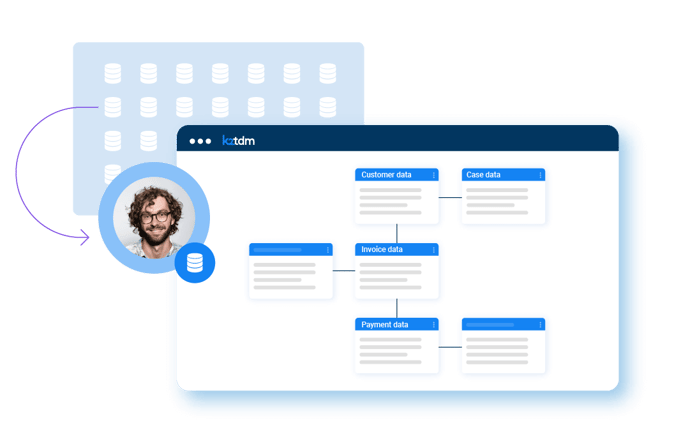The entity-based test data management approach applies a business lens to test data, making it instantly understood and ready for use at enterprise scale.
Table of Contents
Data Friction is Bad for Testing
The Entity-based Test Data Management Approach
How to Apply the Entity-based Test Data Management Approach
Entity-based Test Data Management: No Pain, All Gain
Data Friction is Bad for Testing
One of the most overarching test data management approaches is data friction.
Test data friction can be described as the unnecessarily complicated effort involved in accessing and using the data required to test software applications. The term suggests that the very complexity involved in locating, moving, transforming, and using test data prevents testers and DevOps from becoming as agile as they could be.
In software testing, data friction significantly increases the time it takes to provision the precise test data for application development and testing – impeding software delivery cycle times, software quality, and DevOps productivity.
Since software applications, and their upgrades, are the lifeblood of today’s businesses, testing teams are constantly on the lookout for ways to reduce data friction, and enable test data automation.
A proven new way to eliminate data friction, and enhance your test data management strategy, is by taking the entity-based test data management approach.
Get Gartner’s latest report on test data management.
The Entity-based Test Data Management Approach
The entity-based test data management approach applies a business lens to test data, organizing the information by business entities, to simplify and accelerate test data provisioning, even in the most complex data scenarios.
In this approach, each business entity has its very own corresponding test dataset ready for provisioning. DevOps teams provision test data by referring to the business entities they need, rather than to the various systems, databases, tables, and fields that they need.
For example, a bank might need customer test data for an internal application it’s developing for its loan department. Since customer data is typically scattered and fragmented across dozens of disjointed systems, and potentially hundreds of tables, it would take savvy data engineers – who understand the underlying data structures of each system – to write complex SQL scripts and data transformations, in order to get the data to the software and testing teams that requested it. Not only are such processes resource- and time-intensive, they’re also error-prone.
The entity-based test data management approach makes test data provisioning SIMPLE, by enabling test data management tools to:
- Subset test data quickly and easily, using business language
- Isolate and hide the complexities of the underlying source systems
- Mask PII data in-flight – with no staging environments, no compromise on data privacy, and no complex batch processes
- Perform any data transformations in-flight (from production to testing environments) – with no batch ETL processes, no staging environments, and no code
- Load fresh test data from production, automatically – without impacting underlying source systems
- Enforce relational integrity, even after employing data masking tools, data tokenization tools, or synthetic data generation tools
How to Apply the Entity-Based Test Data Management Approach
The entity-based test data management approach provisions test data from multiple source systems according to a business entity data schema.

A “customer” business entity manages all the data associated with an individual customer.
K2view's entity-based test data management tool organizes and compresses the test dataset for each business entity (e.g., a specific customer) in its own Micro-Database™ within the Test Data Store. K2view TDM ingests the dataset for each entity from the source systems on demand, masks and transforms it on the fly, and provisions it into any lower environment at the click of a button.
The entity-based test data management approach makes test data management, data masking, data anonymization, tokenization, and synthetic data generation, significantly faster, safer, and more cost-effective.
Entity-Based Test Data Management: No Pain, All Gain
The beauty of entity-based test data generation is in its elegance. Any authorized user can use a self-service portal (or APIs) to subset, reserve, refresh, mask, provision, version, and roll back test data – on demand.
So, with almost no effort, you get it all: Quick, compliant, fresh data, leading to enhanced agility, better quality, and reduced costs.
Learn more about K2view entity-based test data management software.













